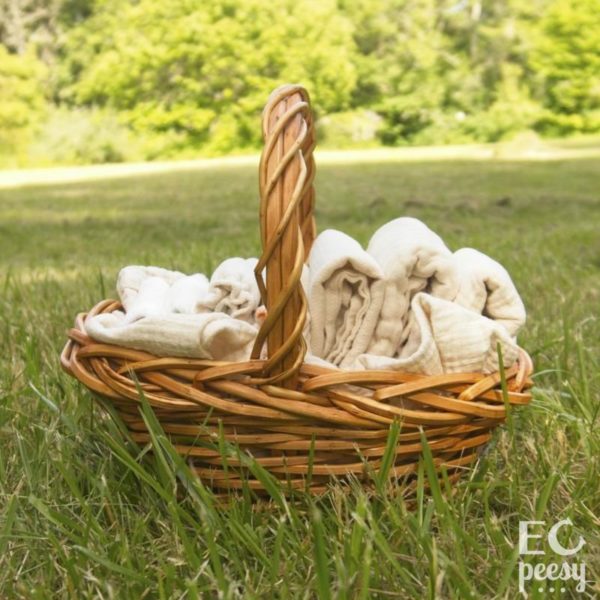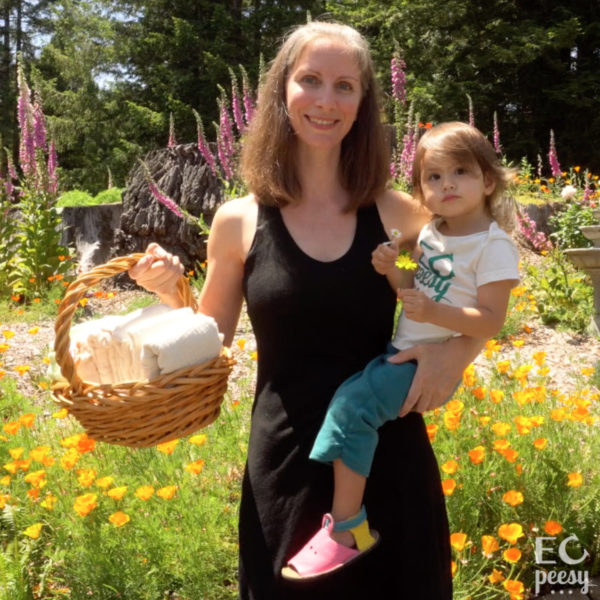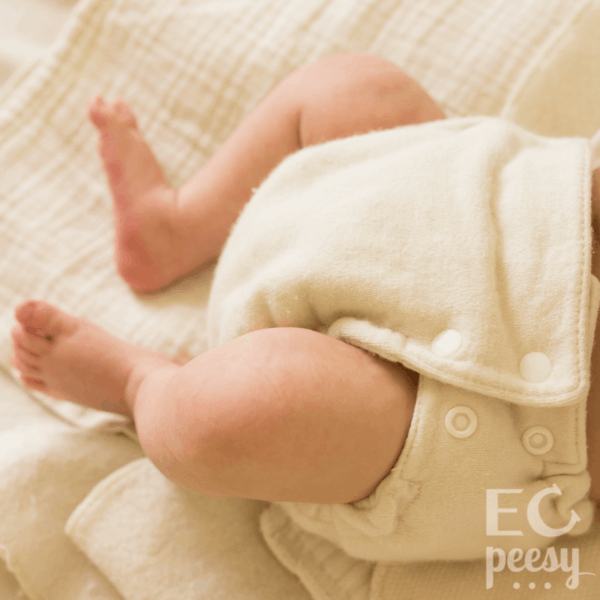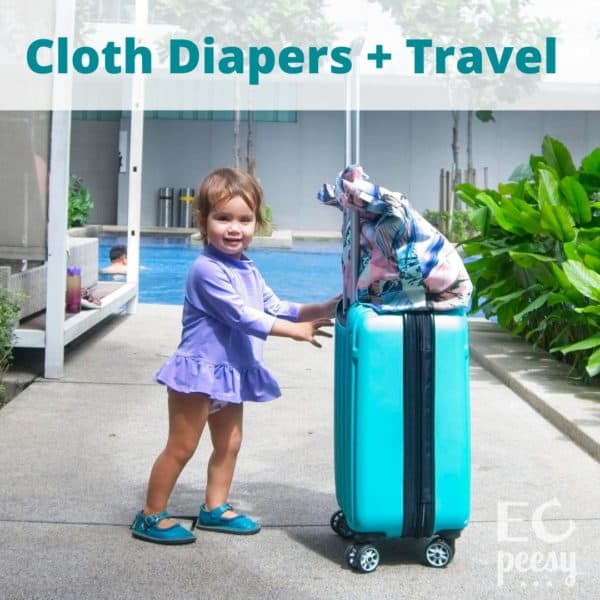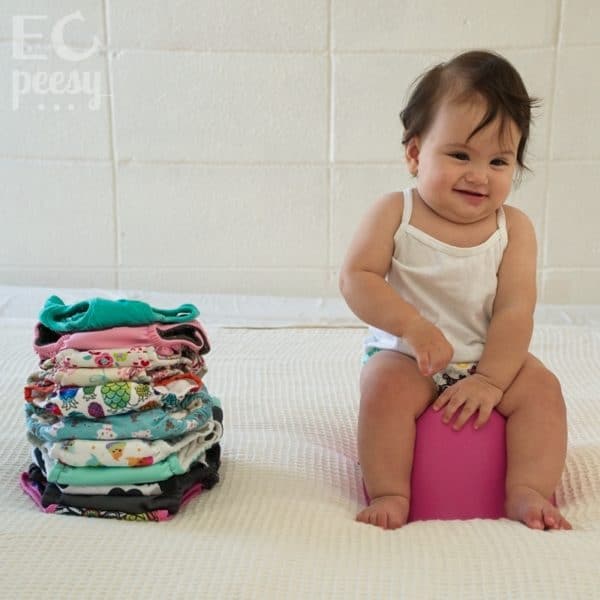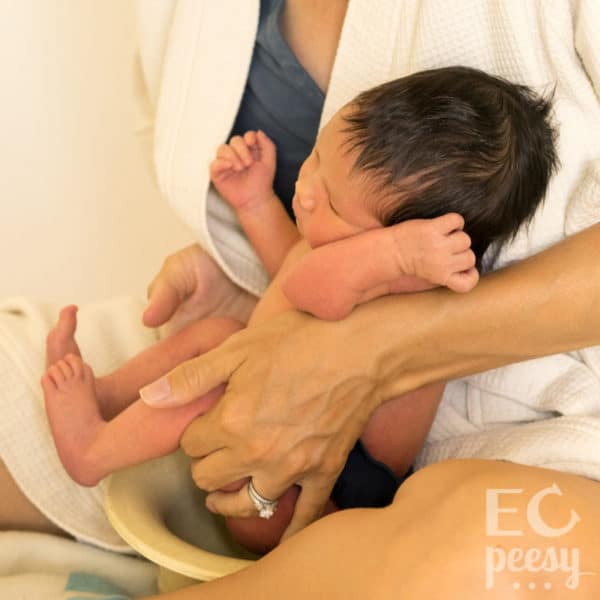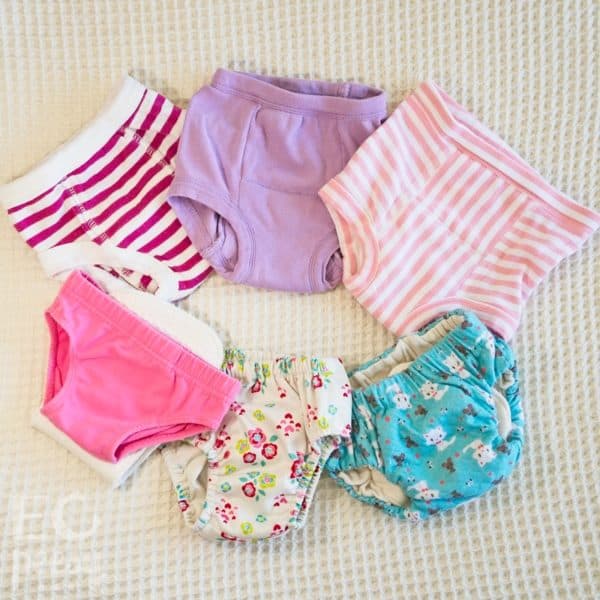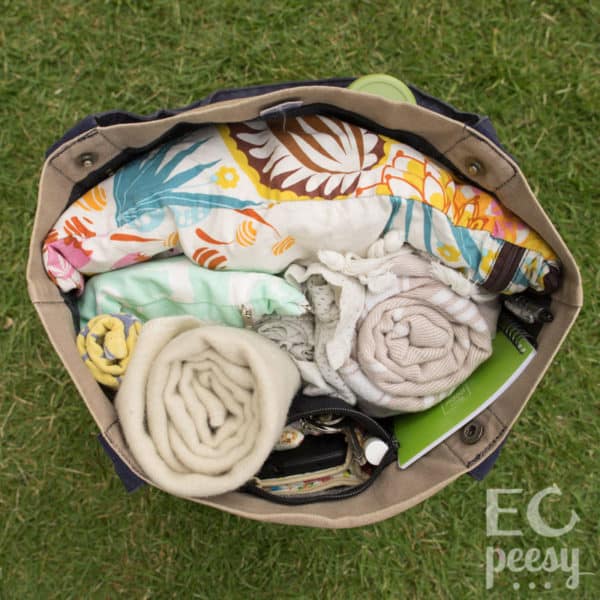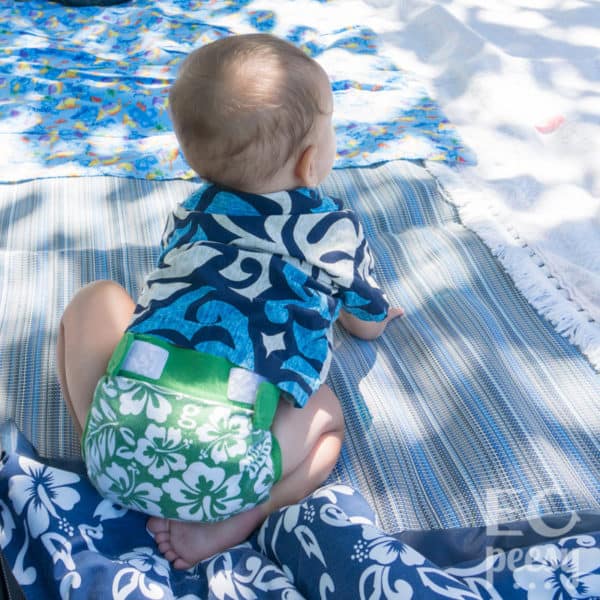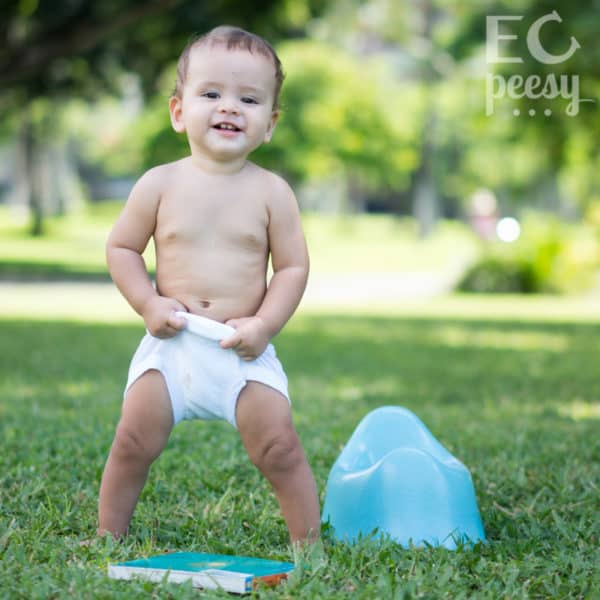2. Which Cloth Diapering Fabrics are Natural? Cotton, Hemp, Wool
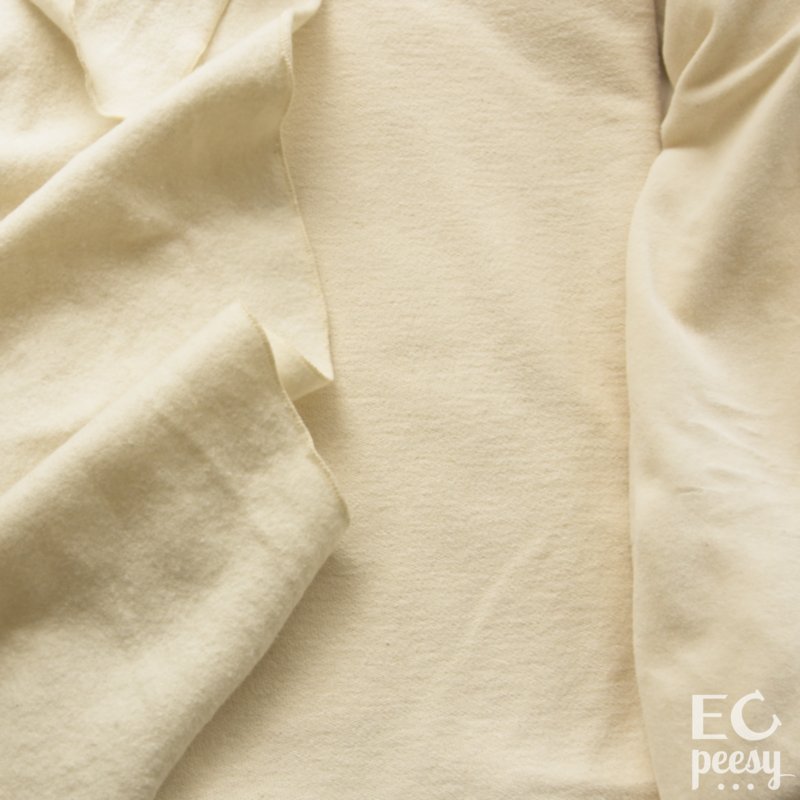
Aloha! Welcome to Lesson 2 of our Natural Cloth Diapering Class. In this lesson we are going to take a close look at natural fabrics used for cloth diapering.
In order to figure out whether a fabric is natural, let's look at where the fibers came from and how the fabric was made.
Natural Fibers
Natural fibers come from a plant or animal. In contrast, synthetic fibers are "man made".
Examples of plant fibers are:
- cotton
- hemp
- linen
Examples of animal fibers are:
- wool
- silk
How Natural Fibers are Made into Fabrics
Let's look at the process through which natural fibers are turned into fabrics.
- A natural fiber is harvested and cleaned.
- The fibers are carded to form long strands and then spun to create yarns.
- There are two main processes to turn yarns into fabric. Yarns are either woven or knit. Weaving or knitting can be done by hand or machine.
Weaving
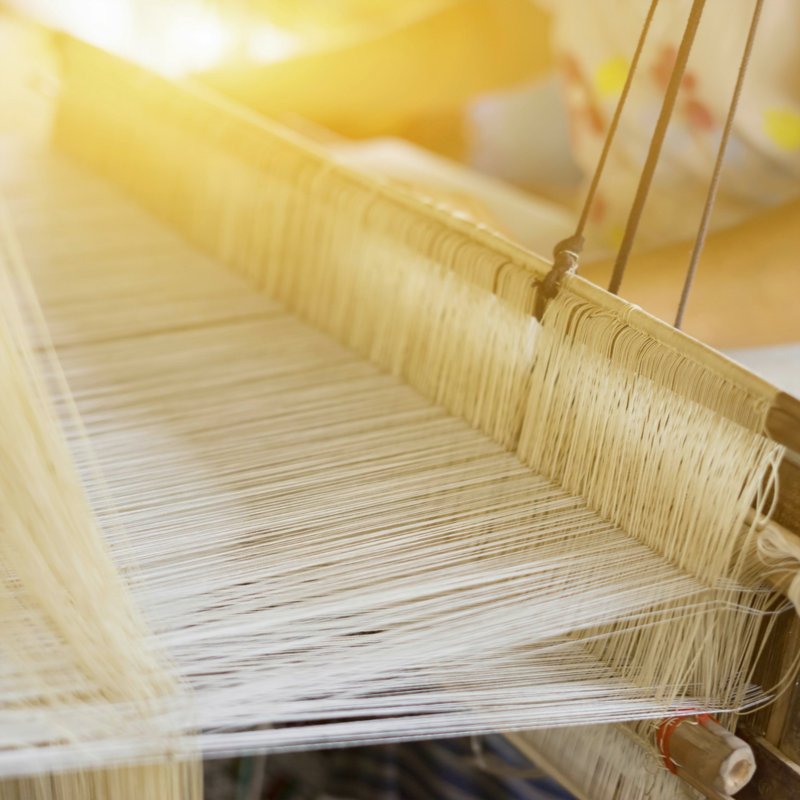
Weaving Loom Making Woven Fabric
Woven fabrics are made by interlacing two or more threads at right angles to each other.
The warp threads go down the length of the fabric and are fixed to a frame or a loom. The weft threads are inserted over and under the warp threads.
Woven fabrics do not stretch as much as knitted fabrics. Woven fabrics normally fray on raw edges.
Knitting
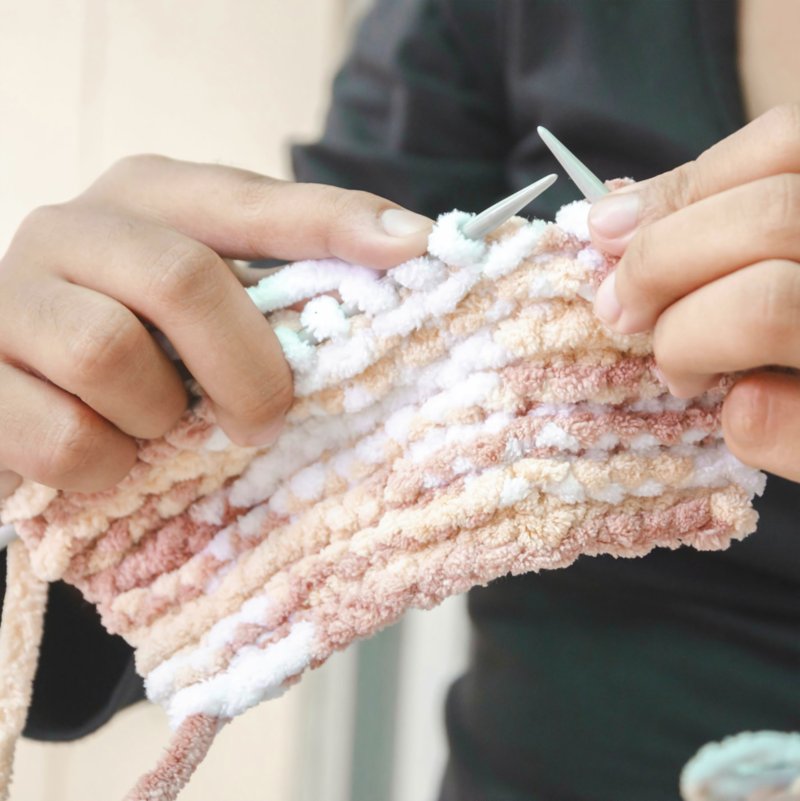
Hand Knitting Fabric
Knit fabric is made from interlocking looped stitches.
The lengthwise rows of stitches are called ribs. The crosswise rows are called courses. These ribs and courses correspond to the lengthwise and crosswise grains of woven fabrics.
Knit fabrics tend to stretch more than woven fabrics. Knit fabrics do not tend to fray, so they can be cut and left unfinished. This makes knit fabrics a great option for DIY flat cloth diapers, since you can simply cut a square of fabric and do not need to sew the raw edges.
Natural Fiber Fabrics Used in Cloth Diapers
The natural fibers most commonly used in cloth diapering are:
- cotton (absorbent)
- hemp (absorbent)
- wool (water repellent if lanolized, absorbent without lanolin)
The most commonly used natural fibers in cloth diapering are cotton, hemp, and wool. Both cotton and hemp fibers are hollow, making them breathable and absorbent. Cotton fabrics or cotton / hemp blends are used as the inner absorbent portion of cloth diapers.
Wool is typically used for natural diaper covers or stay-dry diaper liners. Wool can either be water repellent if it is covered in lanolin or absorbent if it is not covered in lanolin.
Here are some types of natural fabrics used for cloth diapering:
Cotton Cloth Diapering Fabrics
Woven Cotton Fabrics
Muslin - a plain weave fabric made in a range of weights.
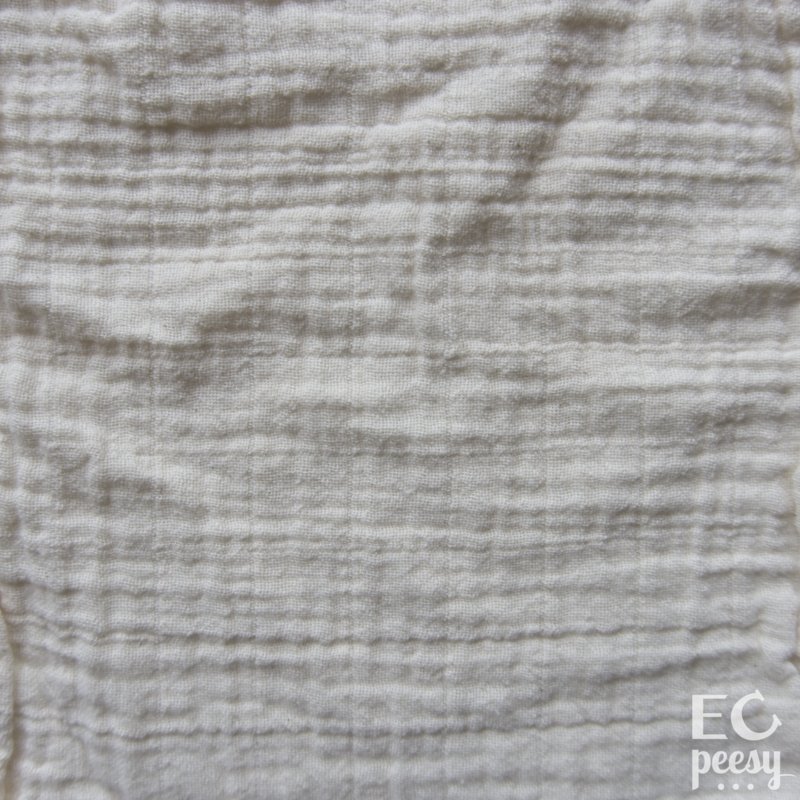
Organic Cotton Muslin Swatch
Birdseye - a woven fabric that has a small repetitive pattern that resembles diamonds, or more commonly thought, the eye of a bird.
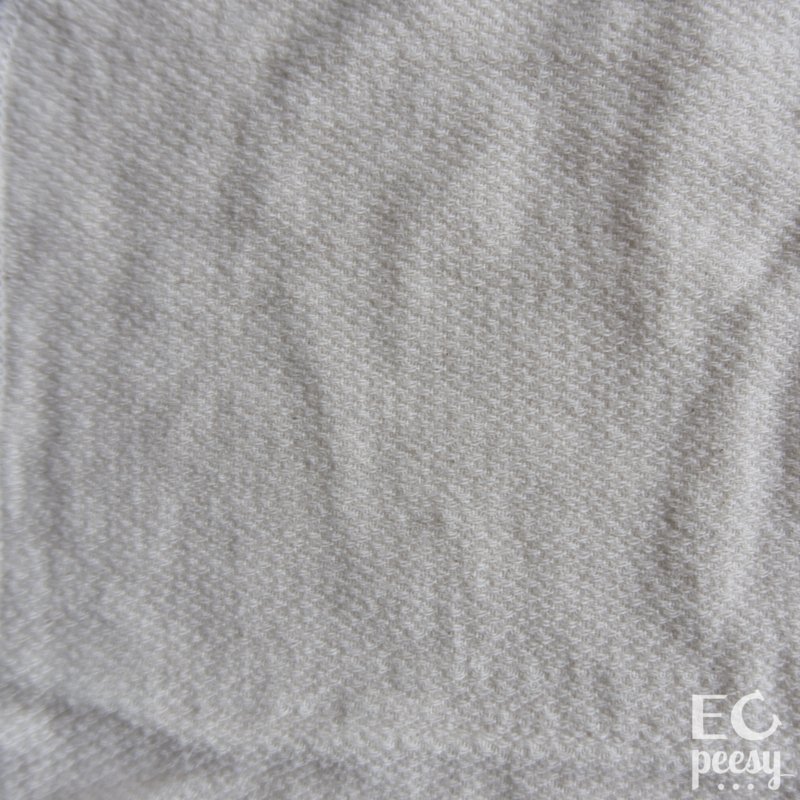
Organic Cotton Birdseye Swatch
Twill - a plain weave fabric characterized by diagonal lines on the face of the fabric.
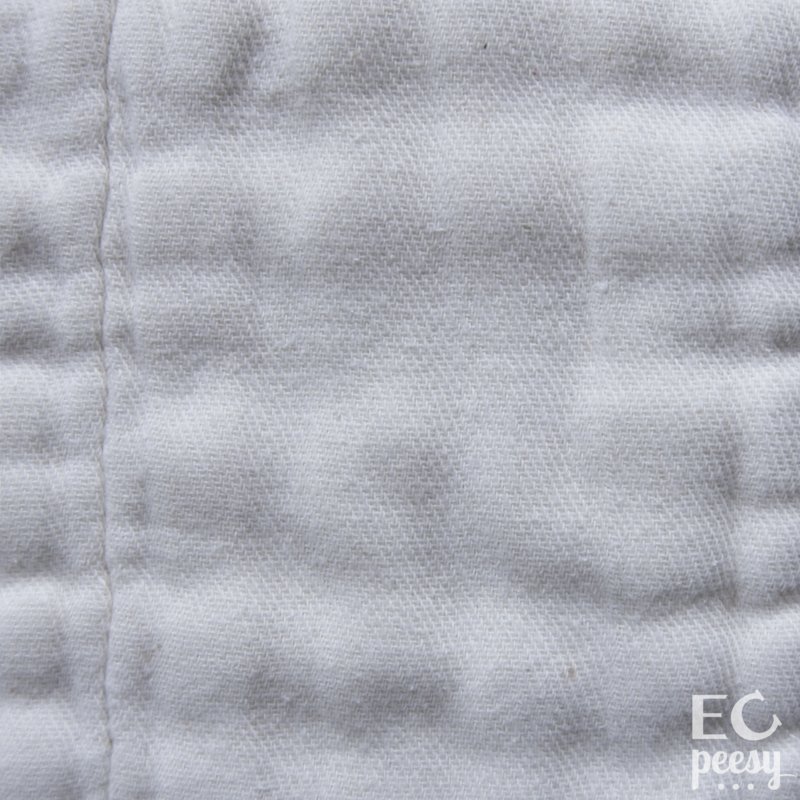
Organic Cotton Twill Swatch
Flannel - a soft fabric that has a napped, or fuzzy, finish on one or both sides. This napped finish either comes from brushing or from its characteristic loosely spun weave. Cotton flannel is commonly used for winter bed sheets.
Knit Cotton Fabrics
French terry - a knitted Terry cloth fabric that features short loops on one side and is smooth on the other side. It is very absorbent, while being thinner than Terry cloth toweling. If you are shopping for fabric and the name says “Stretch French Terry”, it likely contains at least 5% Spandex. You can check the fiber content to see the specific blend of fibers.
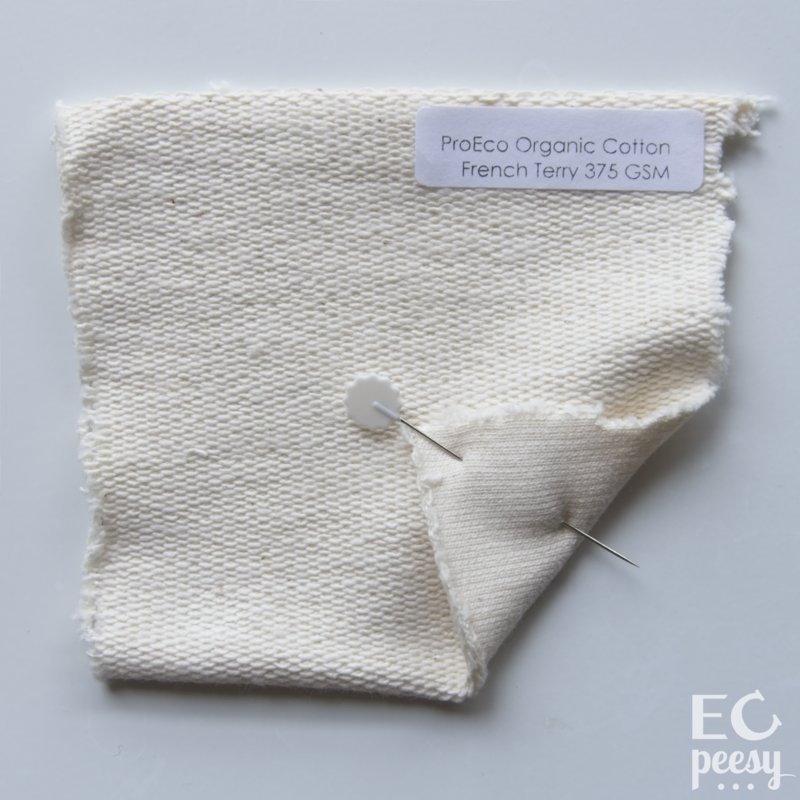
Organic Cotton French Terry Swatch
Interlock - a double knit fabric that is smooth on both sides. It is thicker than a single knit such as jersey or rib knit.
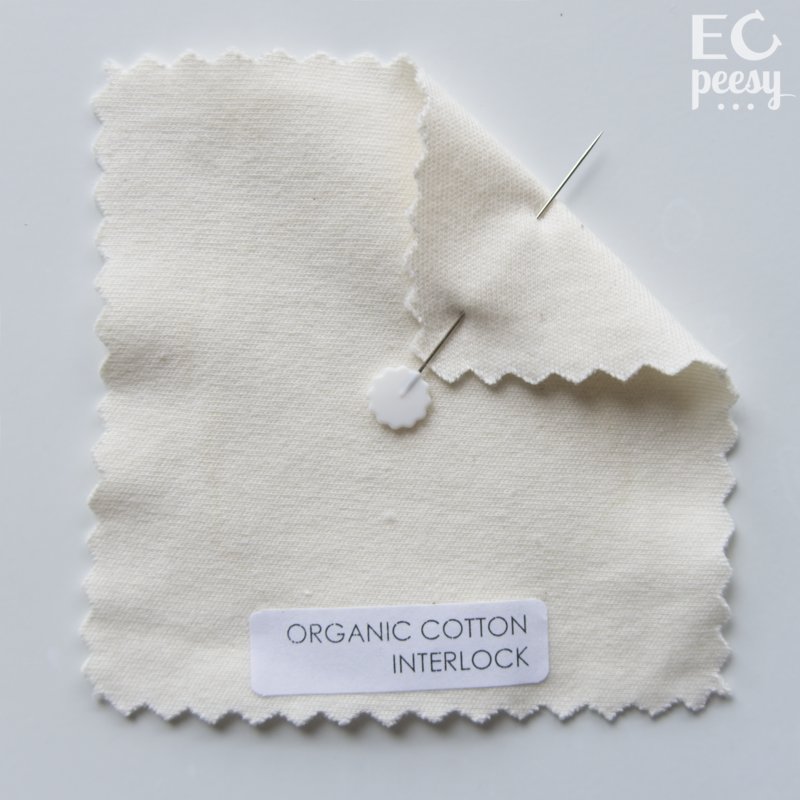
Organic Cotton Interlock Swatch
Fleece - a knit fabric that is soft and fuzzy on one side and smooth on the other. Cotton fleece is often used to make sweatshirts and sweatpants.
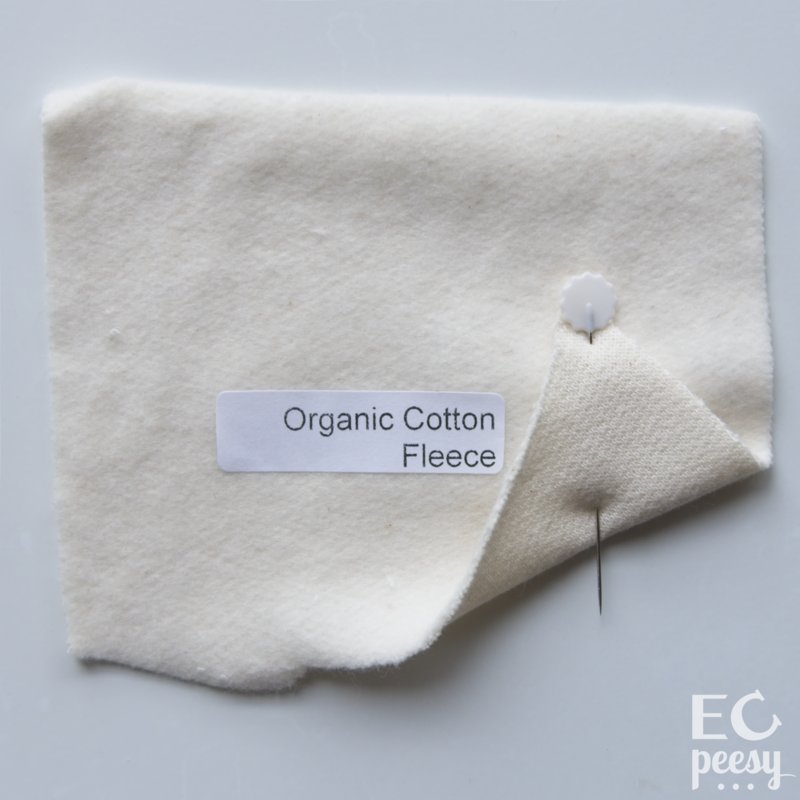
Organic Cotton Fleece Swatch
Velour - a velvet-like knit fabric that is made with loops on one side that are then sheared to a shorter length. In contrast, velvet is a woven fabric that does not stretch.
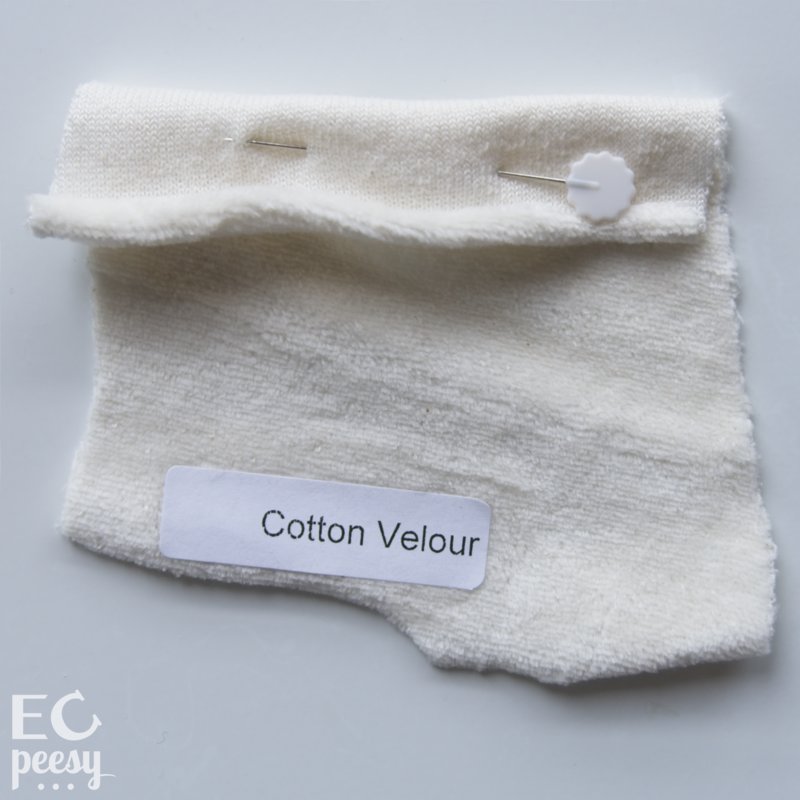
Organic Cotton Velour Swatch
Sherpa - a knit fabric that features a thick fluffy pile reminiscent of wool on one side. The other side is smooth. Sherpa is often made as a synthetic blend, but Green Mountain Diapers offers prefolds made of 100% cotton sherpa.
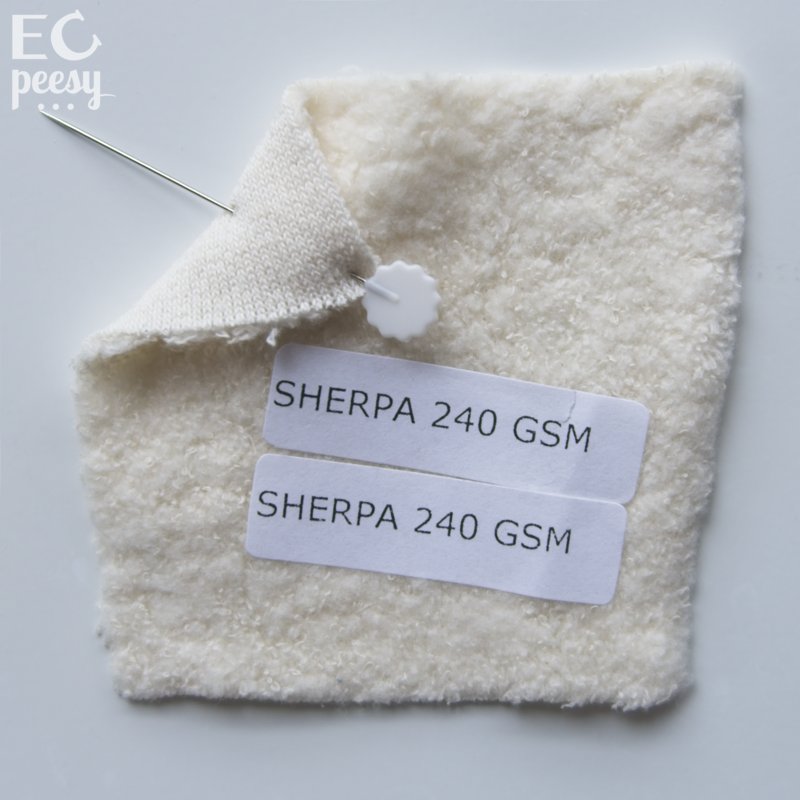
Organic Cotton Sherpa Swatch
Wool Diaper Cover Fabrics
Knit - Wool diaper covers can be knit by hand or machine.
Wool interlock - a machine knit fabric. It is a double knit, so there is no right and wrong sides. It is smooth on both sides. It can be made from 100% wool fibers or blended with spandex for addition stretch and recovery.
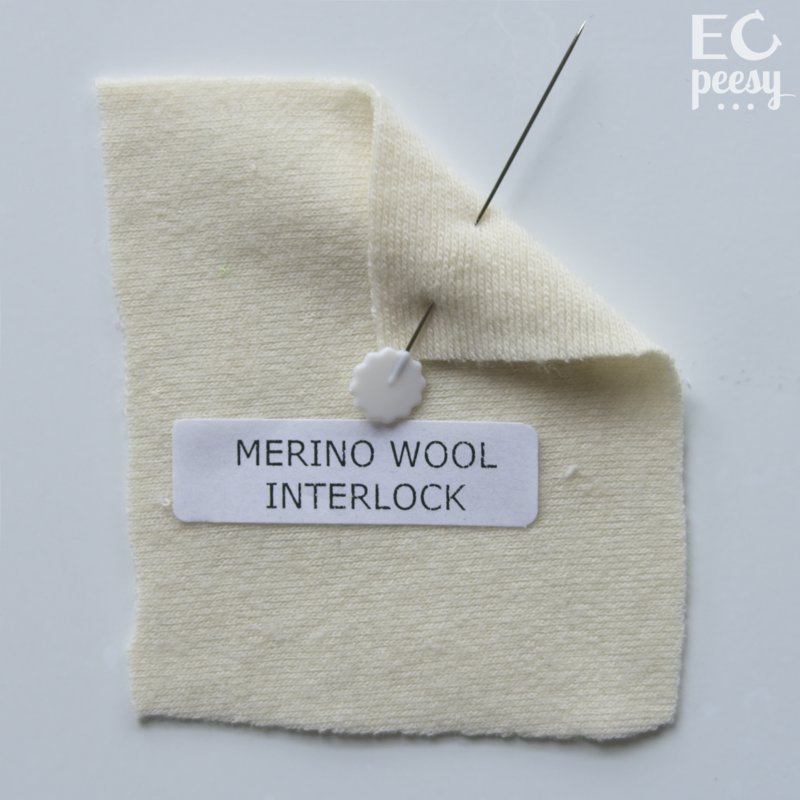
Merino Wool Interlock Swatch
Let's define a couple terms that tend to cause confusion when referring to wool diaper covers.
Merino wool is a natural fiber grown by Merino breed sheep. It is thinner and softer than regular wool, making it comfortable to wear against skin.
Lanolin is a wax secreted from sebaceous glands of wool bearing animals. Lanolin's repellent property aids sheep in shedding water from their coats. Lanolizing refers to adding lanolin back to a wool diaper cover to make it water repellent.
Is Bamboo Fabric Natural? How is Bamboo Viscose Rayon Made?
Bamboo is a giant woody grass. Bamboo plants are fast-growing and don't require pesticides.
The type of bamboo fabric used in cloth diapering is bamboo viscose rayon. Bamboo viscose rayon is made through a similar process as rayon fabric made from wood pulp or cotton lint.
Rayon is a semi-synthetic fiber made by reshaping cellulose.
To begin the viscose process, the leaves and soft inner pith of the bamboo trunk are steamed and crushed to extract the cellulose.
The bamboo cellulose is dissolved in strong chemical solvents, forming an orange honey-like liquid. The liquid is pressed through extrusion heads into a dilute acid causing it to regenerate into cellulose fibers. These regenerated fibers are then knit into bamboo viscose rayon.
Viscose processing normally results in chemical waste, but bamboo cellulose can also be processed in a closed-loop viscose process that captures all the solvents used and is more environmentally friendly.
Regenerated bamboo cellulose fibers are indistinguishable from regenerated cellulose fibers made from wood pulp.
I personally do not consider semi-synthetic bamboo viscose rayon to be a natural fabric, so it will not be featured in this Natural Cloth Diapering Class.
Synthetic Polyester Fibers and Fabrics used in Cloth Diapers
Polyester is a synthetic fiber made through a chemical reaction. The main ingredient used to manufacture polyester is ethylene, which is derived from petroleum. Polyester fibers themselves are not absorbent. Polyester fibers are made into a variety of types of fabrics.
When it comes to cloth diapering, most cloth diaper covers are made from polyester with a thin waterproof laminate applied (TPU or PUL). Often descriptions of cloth diaper covers don't mention that the fabric is polyester, just that the waterproofing is TPU or PUL.
Microfiber is another form of polyester that is used for absorbency in some cloth diapers. It is often the material used for inserts in pocket diapers. The synthetic polyester fibers themselves are not absorbent, but microfiber is created with millions of tiny pocket which hold liquid. However, if the wet microfiber is compressed, the liquid can spill out. This is referred to as a compression leak.
Polyester microfleece or polyester suedecloth are often used as a stay-dry lining against baby's skin. Since the polyester fibers don't actually absorb, these fabrics instead wick the moisture away from baby's skin and into the absorbent material below.
Take for example a synthetic pocket cloth diaper:
- The cover is polyester with a TPU waterproof layer.
- The absorbent insert is polyester microfiber.
- The stay-dry pocket lining that goes against baby's skin is polyester microfleece.
This particular pocket diaper is basically a plastic diaper. Yes, it's a cloth diaper. Yes, it's washable and reusable. But it's made of polyester, which is a type of plastic. But synthetic cloth diapers are not the only option, instead we can opt for cloth diapers made with natural fibers.
In this cloth diapering class we will discuss cloth diapers made with natural absorbent fibers (cotton and hemp) and paired with either synthetic polyester covers or natural wool covers.
Next up, in Lesson 3, I will show you the various types or styles of natural cloth diapers and how to put each style onto a baby.
INDEX: Natural Cloth Diapering Class
- Introduction: Natural Cloth Diapering Class Index
- Lesson 1: Benefits of Natural Cloth Diapers
- Lesson 2: Which Cloth Diapering Fabrics are Natural?
- Lesson 3: Types of Natural Cloth Diapers
- Lesson 4: Tips for Building a Natural Cloth Diaper Stash
- Lesson 5: Accessories for Natural Cloth Diapering
- Lesson 6: How to Wash and Dry Cotton Cloth Diapers
- Lesson 7: How to Wash and Lanolize Wool Diaper Covers
- Lesson 8: Awesome Cloth Diaper Delivery Services
- Lesson 9: How to Sew Your Own DIY Cotton Cloth Diapers
- Lesson 10: Cloth Diapering and Elimination Communication
- Lesson 11: Cloth Diaper Friendly Baby Clothes
- Lesson 12: Packing a Diaper Bag with Cloth Diapers

